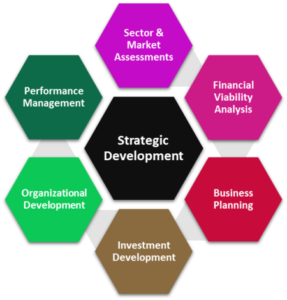A WEAK FOUNDATION UNDERMINES EVERYTHING
Whenever a data source is poorly integrated or a network is congested, your business and its users pay the price. No matter how well designed, product implementations depend on a vibrant, rock-solid, and adaptable technical foundation.
INVEST IN THE RIGHT PLACES
Businesses get into trouble when they repeatedly patch over deficiencies or chase the latest quick fix, hoping that the next deployment will finally deliver sustainable results. This type of investment rarely pays off. Its impact cascades through degraded app performance, usability, sustainability, and work execution. Ultimately, it causes users to resist and reject the change.
FOCUS ON BUSINESS RESULTS
Rapid Force Technology believes that the path to a productive and adaptable technical environment begins with a top-to-bottom look at your strategic goals, competitive priorities, user adoption, data aggregations, and process gaps.
- Where are your enterprise data silos?
- What new data sources and representations are you dealing with?
- What information gaps are users experiencing?
- Where do process redundancies waste system resources?
- Which features or UI issues are slowing user adoption?
- Where do bottlenecks choke application performance?
- What Key Performance Indicators (KPI’s) will you track?
- What could be simplified? Automated? Updated? Discarded?
In the quest for security, compliance is non-negotiable.
Whatever your regulatory/audit environment—PCI-DSS, HIPPA, NIST, FISMA, CJIS, or another—Rapid Force Technology’s processes, tools, and secure coding practices highlight our uncompromising commitment to compliance. Whether in motion or at rest, your sensitive, personal, and regulated data needs protection from malicious activity.
Interoperability should be your goal
Over time, most firms have acquired a complex mix of applications, operating systems, platforms, and point solutions that “speak different languages.” Rapid Force Technology’s comprehensive Enterprise Applications Integration (EAI) approach ensures continuous, secure, and productive orchestration among the services that keep your business humming.
Here are the EAI steps
- Evaluate current application integration status, current requirements, and specific challenges
- Define an EAI roadmap
- Design a detailed and customized solution plan
- Build a microservices architecture that unites your existing technology, enables parallel development, and simplifies maintenance.
- Facilitate efficient business-to-business information exchange with JSON and REST.
- Configure, install, and test the EAI solution and implement optimized data flow designs
Implemented strategically, the cloud can address performance issues
In our consulting services, we help enterprises identify and remove obstacles to a streamlined, flexible, balanced, and high-performance environment that bridges on-premise and off-premise applications and services. This optimization delights customers, staff, and partners—and often pays for itself through more efficient infrastructure utilization.
Contact Us Today
Case study
FGL – 50% IT Cost Savings and Regained Employee Confidence
For 3 years, FGL had not effectively delivered any strategic IT solutions to the business and had experienced multiple project failures. The business had lost confidence in IT delivery’s capability; IT employees had become demotivated after many failures and the business lacked critical resources to make the necessary changes. FGL’s IT department had to find a way to resolve these issues and implement an operating model with a successful formula. Agents and policyholders demanded multiple intuitive software platforms to serve the needs of new business models and FGL needed to find a solution.


